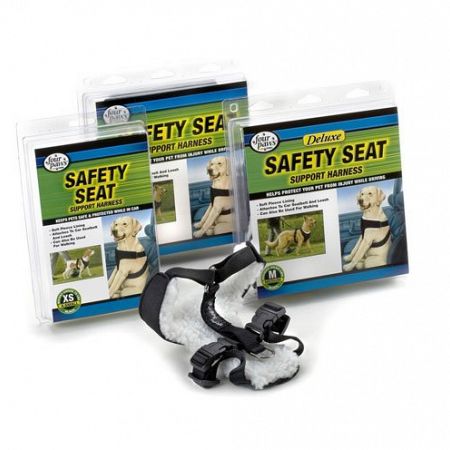 Do you remember when kids didn’t need a seat belt in the car? If you are over 50, you never wore a seat as a kid. Mainly because the cars did not have seats belts. Even when seat belts appeared in cars, many people didn’t wear them. Eventually lawmakers passed laws stating that children legally had to be restrained in a car seat, booster seat or seat belt depending on the child’s weight. Now, even adults are legally required to wear seatbelts.
Do you remember when kids didn’t need a seat belt in the car? If you are over 50, you never wore a seat as a kid. Mainly because the cars did not have seats belts. Even when seat belts appeared in cars, many people didn’t wear them. Eventually lawmakers passed laws stating that children legally had to be restrained in a car seat, booster seat or seat belt depending on the child’s weight. Now, even adults are legally required to wear seatbelts.
Only 17% of pet owners use animal restraints with their pets. May different types of pet restraints are available include harnesses, booster seats and travel crates. Using a pet restraint not only protects your pet, but also protects the car passengers. You should think about your pet in the car the same as you think about a child in the car.
First, pets should never ride on the driver’s lap due to being a distraction, in addition interfering with steering or crawling on the floor and interfering with the foot pedal. Pets should not ride in the front seat due to the risk of injury if the airbag deploys.
In a crash, an unrestrained dog will exert an unbelievable force on whatever it strikes. An small 1o pound dog unrestrained involved in a crash at 50mph will exert a force of 500 pounds. The larger the dog, the larger issue. An 80 pound dog unrestrained involved in a crash at 30mph will exert a force of at least 2400 pounds. What this really means is that your dog becomes a flying missile. He will definitely injure or even kill himself when lands. Also, if he hits a car occupant, both will be injured.
The Solvit Pet Vehicle Safety Harness is available in sizes small to extra-large. Harness has heavy-duty straps attach to a fully-padded, fleece-lined safety vest. The harness has full metal connectors at all the load-bearing points – no plastic buckles like others use. The safety leash is made from a special material that is strength-rated, but provides a slight amount of stretch to absorb shock in the case of a sudden stop. The unique leash design integrates with the vehicle’s seat belt tensioning device, providing range of motion while traveling, but in the case of a sudden stop it locks in place to keep pets secure. This design also makes it easy to load and unload your pet, and installs easily in ALL vehicles.
Older dogs will need time to get used to a restraint. Initial trips should be short rides. Take him on short fun trips like to the park or to visit grandma to get him used to the restraint. Eventually lengthen the duration of the trip. Of course, younger dogs should trained to use a restraint on their first car ride. This will allow him to consider the restraint in the car no different than the leash for a walk. For even more years animals, particularly dogs, have been riding freely in vehicles. Although many have been hurt or killed as well, laws have not changed requiring people to strap their pets into vehicles.
Keep yourself and your pets safe by only driving with your pet when he is properly restrained.
*The the passenger seatbelt should NOT be used for a pet.
Are onions okay for dogs? Learn what happens when dogs ingest onions and why you should avoid feeding onions to your dog on articleinsider.com.


